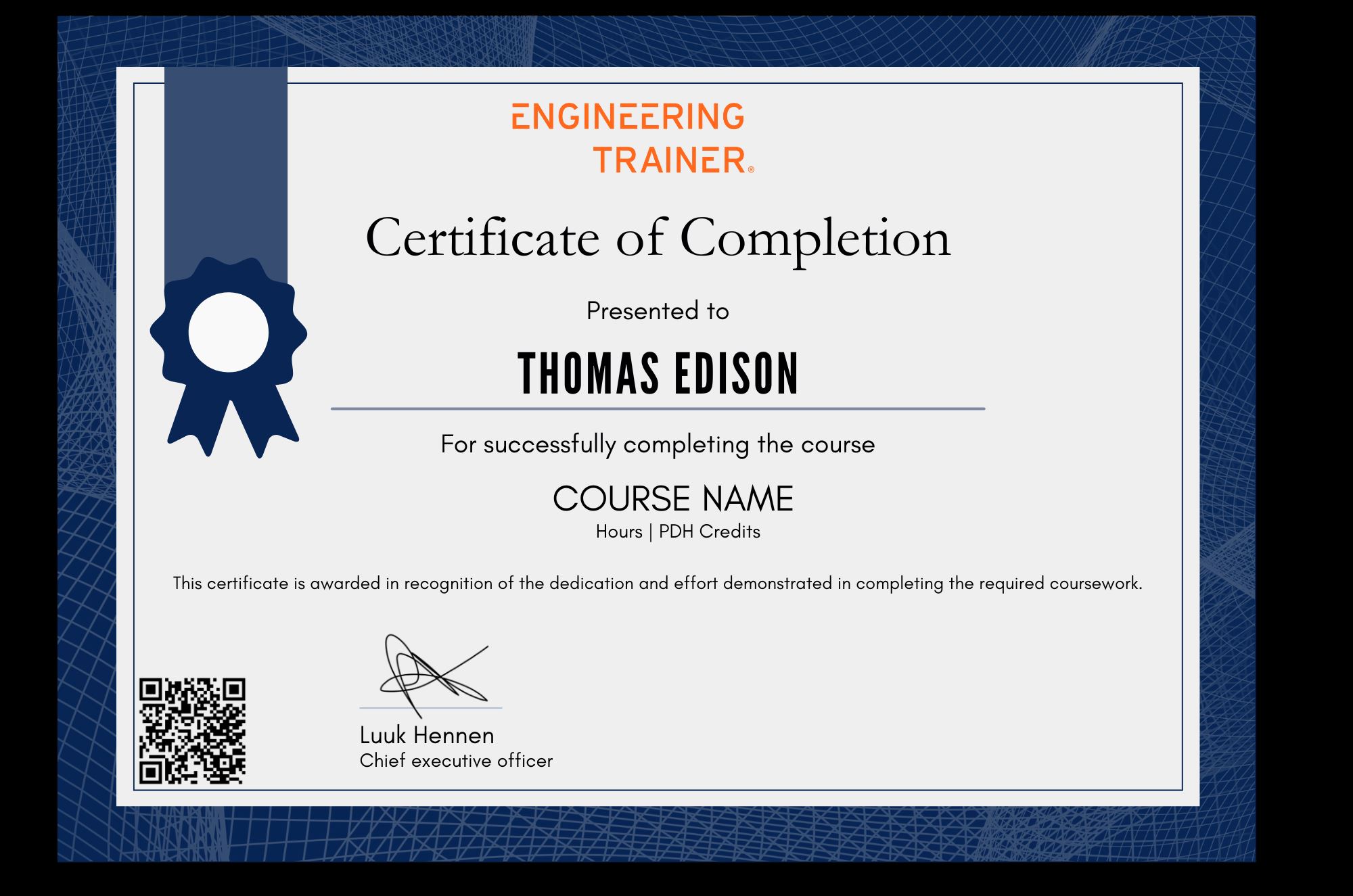Industrial Microbiologically Influenced Corrosion
Why take this course?
Understand and combat Microbiologically Influenced Corrosion (MIC). This self-paced course provides engineers with a deep dive into the causes, recognition, treatment, and prevention of bio-corrosion in various industries. Learn to identify damage from different bacteria, understand MIC mechanisms, and apply effective mitigation strategies. Includes video lectures, quizzes, and a certificate with PDH credits.
What you'll learn
After this course, you...
• will have learned about different types of microorganisms and their corrosion mechanisms applicable to various industries including the oil and gas, and water and wastewater industries, and understand the specific conditions that promote MIC,
• understand the various field and laboratory MIC Monitoring Techniques such as culture methods, direct methods, and molecular microbiological methods (MMM) and how these can be used in practice,
• know how MIC can be prevented or mitigated through mechanical cleaning, chemical application, and cathodic protection,
• have seen several detailed MIC case studies; to understand the causes of corrosion incidents, their consequences, and the lessons learned,
• have the skills to play a proactive role in managing MIC risks in your facility,
• have enhanced your professional competence in microbiology, materials science, and engineering.
About the course
Microbiologically Influenced Corrosion (MIC), also known as bio-corrosion, is the corrosion of metals and degradation of non-metallic materials because of the metabolic activity of microorganisms. Many industries are known to be affected by MIC, including oil and gas, water and wastewater, and nuclear power plants, among others.
This 3-day MIC course aims to provide engineers with a thorough understanding of the causes of microbiologically influenced corrosion, its recognition, treatment, mitigation, testing and monitoring, and prevention. Upon completion of this training course, the participants will be able to identify the different forms of corrosion damage caused by different types of bacteria, the mechanisms of MIC in different industries and apply appropriate strategies and methods to mitigate systems affected by MIC. Guidelines for MIC field sampling and testing to assess the susceptibility of systems to MIC also form part of the syllabus.
The course consists of 21 hour of online live sessions with the instructor. All training content is provided through your EngineeringTrainer account.
Who should attend this course
Those looking to learn about MIC and how to manage it in industrial situations:• Engineers and Technicians; Asset and Facility Managers
• Inspection and Maintenance Personnel
• Health, Safety, and Environment (HSE) Professionals
• Project Managers and Consultants
• Regulatory and Compliance Personnel
Prerequisites
No experience with MIC is required.A basic understanding of Microbiology and General corrosion is beneficial.
Program & Details
-
Introduction to Corrosion
Live
1. What is corrosion?
2. Definition of corrosion terminologies
3. Basic concept of corrosion
4. Types of corrosion
5. Cost of corrosion
6. Factors influencing corrosion -
Mechanisms of MIC
Live
1. What is MIC?
2. Electrochemical versus non-electrochemical biocorrosion/biodegradation
3. Environmental factors influencing MIC
4. Role of bacterial in MIC
- SRB
- APB
- IRB
- IOB
- NRB
- Methanogens
- General aerobes and anaerobes
5. Implications of MIC
6. Group discussion -
MIC Testing and Monitoring
Live
1. Importance of MIC testing and monitoring
2. Field
- Culturing method
- Direct methods
- Molecular Microbiological Methods
3. Laboratory
- Culturing method
- Direct methods
- Molecular Microbiological Methods
4. Online sensors -
MIC Field Sampling (Microbiological and Genomic Analysis)
Live
1. Introduction to MIC sampling
2. Liquid Sampling
3. Solids sampling from Pigging operations
4. Sampling from internal pipeline surfaces and corrosion coupons
5. Sample shiPiping -
MIC Prevention and Mitigation
Live
1. Mechanical cleaning
2. Biocides application
3. Cathodic Protection -
Modeling and Prediction of MIC
Live
1. . Factors that influence MIC for Modeling consideration
2. Prediction approaches
3. MIC-Compass
4. Haile et al. development stage -
Industries and Systems Affected by MIC
Live
1. Oil and gas pipelines
2. Sewer systems
3. Nuclear power plants
4. Fire sprinkler systems
5. Anaerobic digesters
6. Drywalls
7. Others: Group discussion -
Materials Affected by MIC
Live
1. Cast Irons, Carbon Steels and Low Alloy Steels
2. Stainless Steels and Alloys
3. Nickel and Nickel Alloys
4. Copper and Copper Alloys
5. Aluminium and Aluminum Alloys
6. Zinc and Zinc Alloys
7. Others: Group discussion -
Industrial Damages MIC on Metallic Substrates
Live
1. Accelerated General Corrosion
2. Rapid Through Wall Pitting or Perforation
3. Tubercle Formation
4. Others: Group discussion -
Case Studies and the Future
Live
1. MIC Case Studies
2. MIC future prospective
3. Open Discussion
Certification


Why choose EngineeringTrainer
-
Unlimited Team-wide Access
-
Advance Technical Competences
-
Courses by Industry Authorities
Since using EngineeringTrainer our internal mentorship has a much more matured character.
Logan Chapman - COO at Chapman Consulting Inc.








